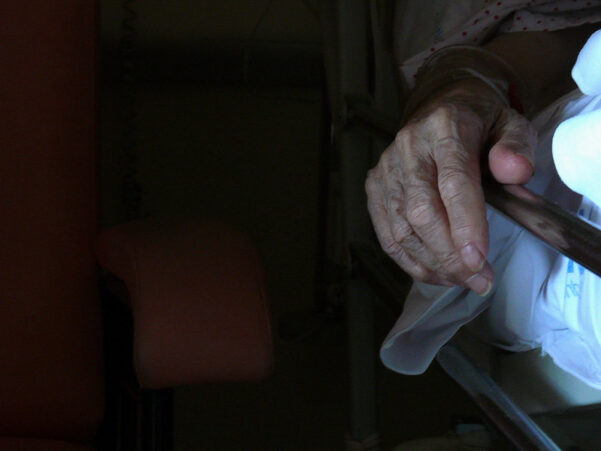
Pro-euthanasia advocates in Ireland, as elsewhere, insist that properly drawn legislation permitting assisted suicide and euthanasia will ensure that such a law will never be abused. Numerous safeguards, they assure us, can be put in place. A new academic study from Belgium very much indicates the opposite is the case.
The three authors, who are based at the University of Ghent, are not against euthanasia in principle but they admit that “several legal requirements that are intended to operate as safeguards and procedural guarantees in reality often fail to operate as such. We believe this is ethically and legally problematic and should be of concern to everyone, regardless of their stance on the ethical justifiability of euthanasia in general.” (p. 82)
Euthanasia was introduced in Belgium in 2002. Initially it was offered only to adult patients with a medical condition without prospect of improvement. Later, the law was amended to allow euthanasia for minors but, with time, its interpretation and application has become more and more liberal. And while the number of cases continuously rise, it now includes psychiatric conditions or simply being “tired of life”.
When the law was first introduced in 2002, 24 cases of euthanasia were performed. By 2019 this had risen to 2,655.
What has happened in Belgium is typical.
The authors of the Belgian study found shortcomings in the legislation, in its application and in the monitoring of the practice. With regard to the legislation, they claim that the scope of the law “has been stretched from being used for serious and incurable illnesses to being used to cover tiredness of life.”
For instance, it is required that the patient experiences “constant and unbearable physical or psychological suffering that cannot be alleviated”. But the interpretation of this requirement is problematic as it is not clear “whether the incurability criterion refers to the mere existence of possibly effective treatments or to the existence of possible effective treatments acceptable to the patient.” (p. 87). What happens if the suffering cannot alleviated precisely because the patient refuses a treatment that is otherwise available?
The standards are completely subjective as only the patient can determine what suffering is unbearable or not. This changes and alters the role of doctors, who are “reduced to merely meeting patients’ demands”. (p. 87)
The study refers to empirical evidence and reports that in Belgium “euthanasia is performed increasingly frequently in cases of psychological suffering” (p. 87) Also, the Monitoring Commission admitted that cases of “tiredness of life” have been reported.
The opinion of a second physician, beside the one who kills the patient, is required by the law but it is nonbinding. If legal criteria are not met, the physician has no legal means to report this or to prevent the euthanasia from occurring. This makes the second opinion totally irrelevant.
“The obligatory consultation of one or two independent physicians may fail to provide a real safeguard. Their tasks are quite limited, and, more importantly, their advice is not binding anyway. The final authority to perform euthanasia lies with the attending physician who can perform it even against the (negative) advice of the consulted physicians”, the study says (p. 102).
The Belgian law also established a Monitoring Commission with the task of checking reports on euthanasia cases and, if the legal criteria are not met, it must refer the case to the Public Prosecutor. This has happened only once since the law entered into force in 2002.
The study found that “the Commission is unable to check the fulfillment of various legal criteria, and it has substantial authority to (re)interpret the Euthanasia Law as it sees fit.” (p. 102)
Its functioning is undermined by the underreporting of the euthanasia cases. Recent research suggests that one third of cases are not reported. Moreover, the advice of the second consultant does not have to be included, making the report “overly concise”, according to the article.
“Several commentators have observed that the Commission does not seem to act as a filter between physicians who perform euthanasia and the Public Prosecutor, but instead as a shield that prevents potentially problematic cases from being referred”, the study claims.
For instance, a member of the Commission resigned in September 2017 after a case involving a patient suffering from advanced dementia and Parkinson disease was not reported to the Public Prosecution. Not a single criteria was met and euthanasia had not even been requested by the patient.
Other cases where the legal criteria were not met emerged through the years. (Here is an example)
The authors of the study note: “Our concern is that the Commission’s current level of discretion in assessing the legitimacy of euthanasia cases in practice leaves it with considerable powers that would normally be the prerogative of the legislature or the judiciary.” (p. 101)
This academic article confirms what the anti-euthanasia campaigners have always claimed: initial safeguards are removed with time, through a change in the legislation but also through more liberal interpretations of the law by courts, medical committees or monitoring commissions.
“Several of these shortcomings are structural and thus require more than simply increased oversight”, conclude the authors of the study.
The Belgian examples shows that once euthanasia is introduced, it becomes almost impossible to limit its scope or to avoid abuses.
Nessun commento:
Posta un commento